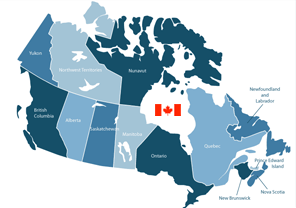Acute Headache Treatments
Acute Medicines - Introduction
Acute medicines for migraine are designed to stop a migraine attack, or reduce the symptoms associated with a migraine headache, at the time of the attack. Rescue medicines are also known as acute medicines that are used when usual treatments fail, or are inadequate to relieve headaches.
According to the American Migraine Foundation, acute medicines for migraine generally fall into three categories. They are: analgesics (mentioned above), ergotamines and triptans (next section). However, as you can see there are others.
Non Steroidal Anti-Inflammatory Drugs (NSAIDs)
Non-steroidal anti-inflammatory drugs (NSAIDS) are commonly used medications for many pain conditions, and can be very effective for the treatment of migraine.
There are several methods of administration to choose from:
- tablet (ibuprofen, naproxen) - OTCs - see previous section
- nasal spray (ketorolac) (a U.S product that is not available in Canada)
- dissolved in water (diclofenac potassium) (Cambia) see below
- injection (Ketorolac or Toradol)
While some patients may find the NSAIDs to be consistently effective even for migraine of moderate to severe intensity, these drugs typically are more useful when taken early in the migraine attack. 1 They can also be taken in combination with triptans to improve efficacy and lower risk of headache recurrence.
It is important to note that Naproxen Sodium is preferred over naproxen as it has a faster onset of action.
It is recommended that women who are pregnant should avoid NSAIDs in the 3rd trimester. 2
NSAIDs have been used prophylactically in the prevention of Menstrual Migraine. They are also used to treat menstrual migraine attacks. For more on Menstrual Migraine refer to our Migraine Categories page.
Diclofenac Potassium Powder for Oral Solution (Cambia®)
Cambia® – A relatively new acute migraine treatment medication now available by prescription. Diclofenac Potassium powder for oral solution (Cambia®)
A new formulation of an already-existing prescription medication – diclofenac potassium – has been recently marketed in Canada under the name “Cambia®” for the acute treatment of migraine attacks in adults 18 years of age and older. It is available only on prescription.
For the complete article CLICK HERE
Naproxen Sodium
Naproxen Sodium belongs to a group of medications called non-steroidal anti-inflammatory drugs (NSAIDs). It reduces swelling, inflammation and pain, and is used for the relief of mild to moderate headaches, or migraines. 3
Prescription brand names include Anaprox and Naprosyn. There are many generic names of Naproxen also.
The over-the-counter version comes in a 220mg tablet, under the brand name Aleve, and many generic versions.
The prescription version comes as an oral immediate-release tablet. 4 Some products are called "12-hour tablets."
Side effects are rare, but can include ulcers, bleeding and very rarely heart attack - linked with long-tern usage. Stomach upset is a more common side effect.
Note: Naproxen is also available in an over-the-counter form.
Butalbital-Containing Drugs
Butalbital is a barbituate (sedative) that is sometimes used to treat tension headaches, or migraines. It is not an ideal drug for treating headaches because it can result in physical dependence or addiction and has been associated with medication overuse headache in migraine sufferers. It is available in combination with ASA (in Canada) or acetaminophen (in the U.S. only) and caffeine, with or without codeine. There is a lack of good evidence for using it for migraine and most headache specialists do not recommend its use.
The most common butalbital-containing medication used for the treatment of migraine headaches is Fiorinal®. Fiorinal® is a combination of ASA, caffeine and butalbital (with, or without codeine). Because it contains ASA and caffeine, it is also a pain reliever and a stimulant. 5
Butalbital is a sedative that helps to decrease anxiety and cause sleepiness and relaxation.
Opioids
Opioid (narcotic) analgesics are pain relievers which are chemically related to morphine and used for a variety of painful conditions and circumstances, including the treatment of migraine when other medications fail or are ineffective. Opioids work by blocking pain messages sent to the brain, thereby altering the brain’s perception of pain. However, opioid use can result in physical dependence, addiction and medication overuse headache. They are not ideal drugs for treatment of migraine and should only be used if there are no other suitable alternatives.
Read the full article on Opioids and Headache from the National Headache Foundation
Antiemetics (Anti-Nausea)
Many patients experience nausea and vomiting along with their migraines. The nausea and vomiting symptoms usually get better when you treat the migraine, but sometimes the nausea and vomiting are bad enough to keep a person from taking their migraine medications. In these cases, an anti-nausea drug can relieve your symptoms and help you get the treatment you need. 9
Sleepiness is a common side effect and adverse reactions like low blood pressure or dystonic symptoms are sometimes observed. 10
Some anti-nausea medicines have sedative effects, so drowsiness or reduced alertness is a common side-effect. They are often taken with a pain medicine, as they only reduce nausea, and do not control pain when taken orally. If given intravenously in the ER, some anti-nauseants (such as metoclopramide, prochlorperazine) can also relieve a migraine attack. 8
consider...
- metoclopramide
- prochlorperzaine
- ondansetron (with fewest side effects)
Ergotamine and Dihydroergotamine
Ergot derivatives (ergotamine, dihydroergotamine) were the first class of drugs used specifically for migraines. They cause blood vessels around your brain to contract and can relieve a migraine quickly. Ergotamine was available as oral tablets, tablets that dissolve quickly under your tongue, and suppositories. 6
Ergotamine products are no longer available in Canada.
Dihydroergotamine is available as:
- Dihydroergotamine (DHE) - injection
- Dihydroergotamine Nasal Spray (Migranal)
Dihydroergotamine injection is given intravenously (sometimes intramuscularly) in hospital emergency rooms or specialty headache centres (in the U.S.) for severe or long-lasting migraine attacks. It is given along with an anti-nauseant medication.
You should not take ergot derivatives if you are pregnant, nursing, or want to become pregnant. Patients with high blood pressure or a history of heart disease should not take this medication. Additional side effects that some experience can include nausea, vomiting, dizziness or light-headedness.
The Health Line suggests” ...Ergotamine can have dangerous side effects can include such as birth defects, in higher doses.” 7
Always consult with a physician before taking ergotamine.
According to Dr. Elizabeth Leroux, a Montreal-based Headache Neurologist, a dihydroergotamine pump inhaler is currently being studied.
new! Ubrogepant - oral CGRP
Ubrogepant is a novel, highly potent, orally-administered CGRP receptor antagonist (gepant), approved by the FDA (US.), but not yet approved in Canada, for the acute treatment of migraine. CGRP and its receptors are expressed in regions of the nervous system associated with migraine pathophysiology. CGRP receptor antagonism is a completely new mechanism of action for the acute treatment of migraine compared to medications currently available, which include triptans (serotonin 1B/1D receptor agonists), opioids, ergots as well as over-the-counter medications, such ibuprofen and acetaminophen. 14
Acute Migraine Treatment in the Emergency Room (Short)
When you are in the middle of a severe migraine attack, it takes a herculean-type effort to leave the house and go to an emergency room (ER).
Migraine is a common reason for a visit to the emergency room. The bright lights, many sounds, sometimes unpleasant odours and long wait periods can make it an “unpleasant experience for most migraneurs” - especially once a full-blown migraine exists.
Typical headache duration at emergency room presentation is on the order of 24 to 72 hours in several migraine clinical trials. 11
Items to bring with you include (as recommended by the American Migraine Foundation:
- A letter from your headache doctor explaining your diagnosis, and a full history of your illness. Include your doctor’s contact information in case the ER doctor has questions for them
- A full list of your medications. Try to bring them with you as well (this shows authenticity)
- Your headache/migraine diary.
- An advocate. A trusted friend or family member has a dual role—they can care for you and ensure you get to the hospital and home again safely. They can also vouch for you if you do not have a physician)
above “items” to take to the ER courtesy of the American Migraine Foundation
Medication sometimes used in the ER consist of:
- Neuroleptics/Antiemetics (anti-nausea medicines). It is very common for migraineurs to experience nausea with their migraine.
- NSAIDS - Non Steroidal Anti-inflammatory Drugs are occasionally administered (see above)
- Dihydroergotamine (used more often in U.S. hospitals)
- Opioids (see above)
Which Drugs Have a Better Chance of Stopping Migraines?
If you have migraine attacks, try one of the drugs listed below. They all work best if you use them when the migraine is just beginning.
- Start with a non-prescription pain drug like acetylsalicylic acid (ASA), ibuprofen or acetaminophen. If these are not helpful, you can try other non-steroidal anti-inflammatory drugs (NSAIDs), some of which need a prescription, like diclofenac potassium (Cambia®) and naproxen sodium.
- If these drugs do not help, or your headaches are more severe, try one of the prescription migraine drugs called triptans (next section), such as sumatriptan (Imitrex and generic).
- If a triptan is helpful but not as effective as you would like, you may combine a triptan with an NSAID (take them simultaneously).
- If the above options are not helpful, you can try dihydroergotamine nasal spray (Migranal). This drug works even better as an injection (Dihydroergotamine AMP and generic). You can do the injections yourself once you are trained.
- If you have a lot of nausea with your attacks, all of the above medications can be combined with an anti-nausea medication, like metoclopramide.
If you have migraines often, or if they are very severe, ask your doctor about drugs to prevent headaches (see section on Preventative Medicines). 12
REFERENCES - Acute Medicines
- American Headache Society, Non-Steroidal Anti-Inflammatory Drugs (NSAIDs) for Acute Migraine treatment
- Gelfand, A, Goadsby, P, A Neurologist’s Guide to Acute Migraine Therapy in the Emergency Room , Neurhospitalist 2012 Apr; 2(2): 51-59
- Rexall - Prescription Drugs - Naproxen Sodium
- The Health Line - Naproxen Sodium - tablet forms
- NCBI .nlm.nih.gov/pubmed/2537360839.
- Migraine.com - Butalbital
- he Health Line - Acute Migraine Drugs - Ergotamine
- The Health Line, Acute Migraine Treatments, ergotamine
- Irene Worthington, Anti-nausea medications
- WebMD - Nausea drugs for migraines and headaches
- Leroux, E Migraines, Antiemetics 2016
- The American Migraine Foundation - Acute Migraine Treatment in the Emergency Room
- Choose Wisely Canada - Which Drugs Have a better Chance of Stopping Migraines?
- Allergan Canada, oral CGRP Ubrogepant

